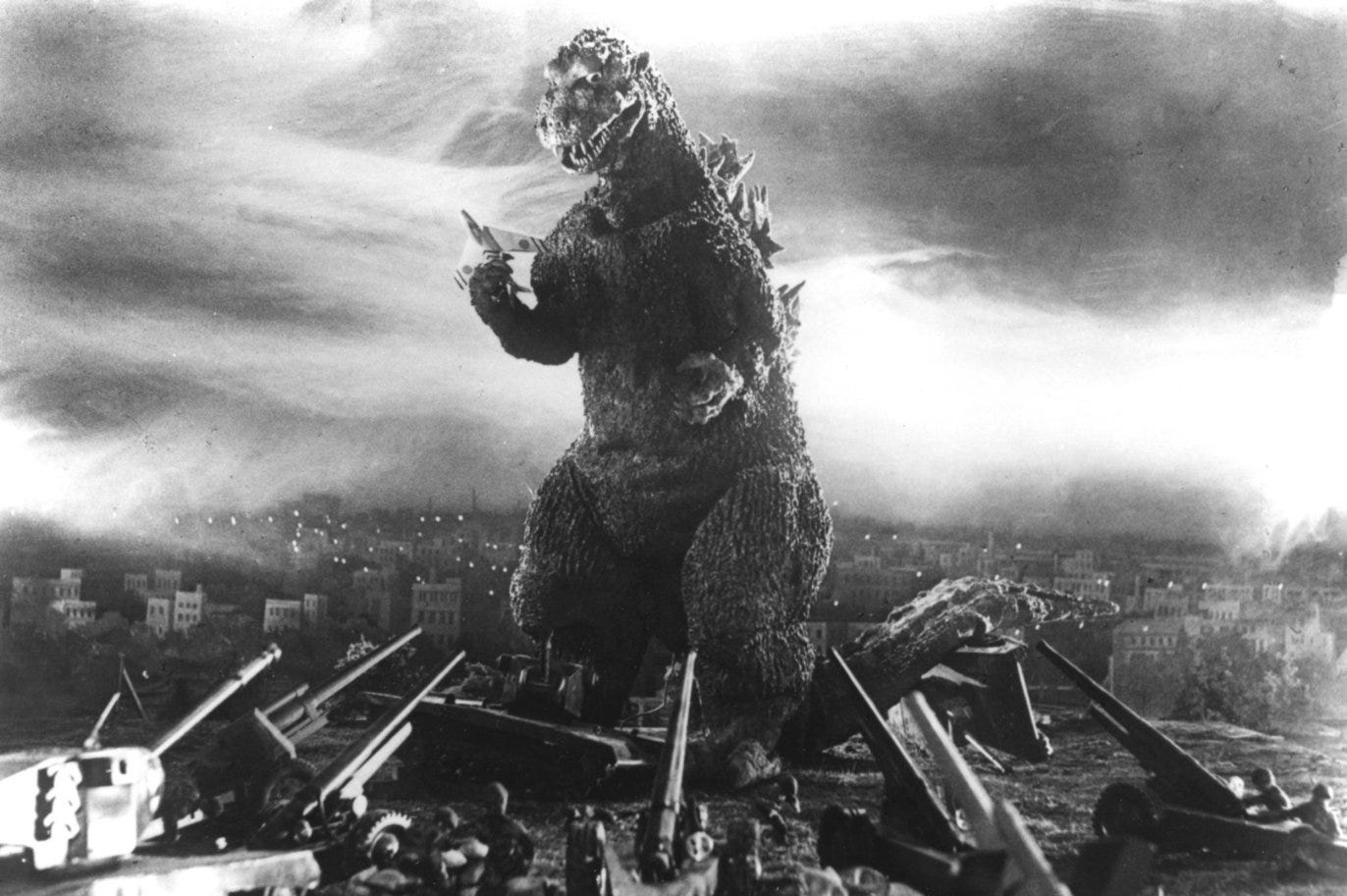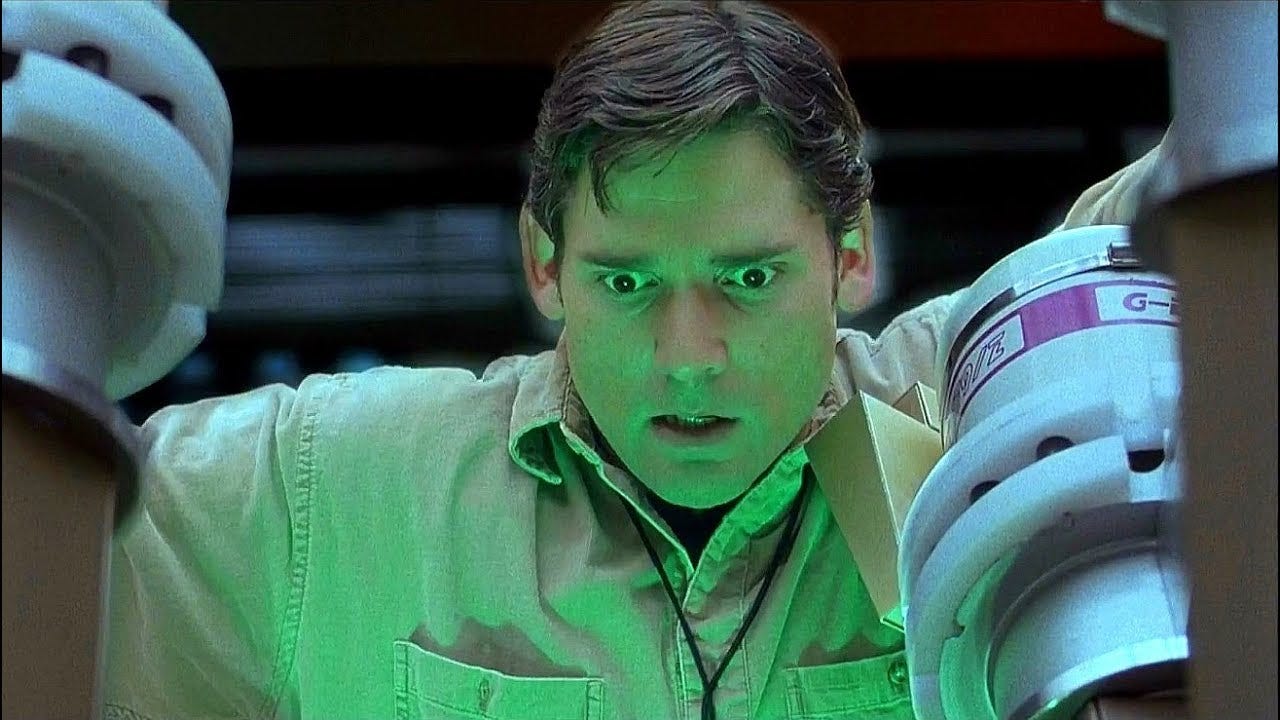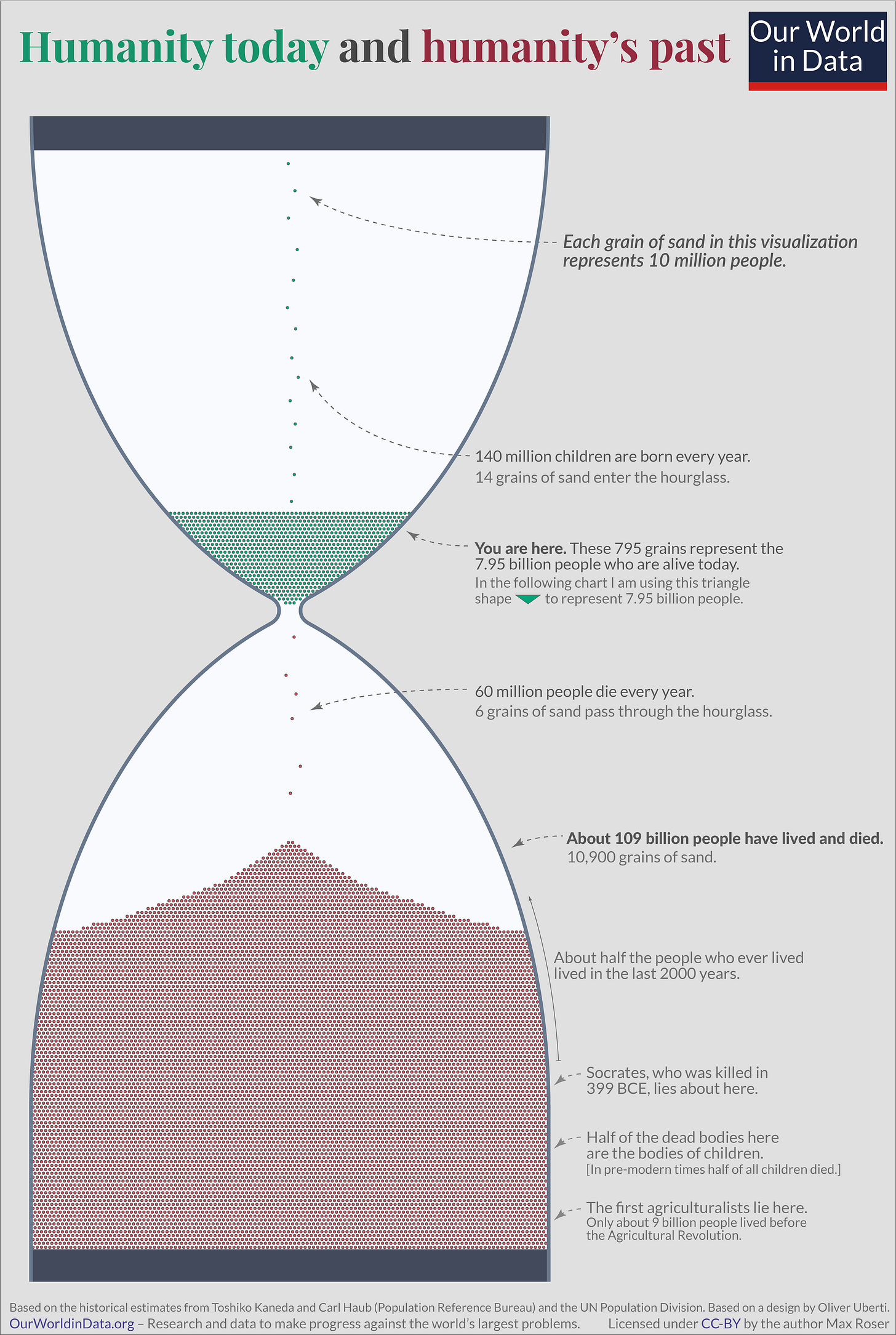The Weird Science Drop #5 🧪 Time actually is on your side
🐛 Space bacteria discovered 🙇♂️ Tips on saying 'sorry' ⏱ How you can slow down time 🥇Plus, you can turn lead into gold after all
“Mhoro!* Welcome to the fifth edition of The Weird Science Drop. This week’s delicious platter of curiosities features everything from (another) dark side of AI to where you sit in the hourglass of humankind. Enjoy!”
Daniel
Weird Science News ✍
🐛 We’ll start off with news that will definitely come back to bite us at some point. Researchers have discovered traces of a bacterium on China’s space station that you don’t find on Earth. Niallia tiangongensis - named after the station Tiangong - has a unique ability to break down gelatin as a source of nitrogen and carbon. Everyone appears to be very calm about the discovery, saying it proves how hardy life can be that it can flourish in zero gravity. But I’m calling it now, I’ve seen enough movies to know that it will almost certainly evolve into space Godzilla, or at least Venom goo. Read more on Science Alert
💻 AI is the next gold rush. And every tech company is marching up the mountain armed with its own pickaxe. Now, I have a big problem with AI in that it’s not AI at all - just predictive text on steroids - but AI is here to stay. And while it can help workers’ productivity, there is a price to pay according to a new study. An AI hangover, if you will. Employees using AI will indeed produce better work, but it saps their motivation at the same time. Making them bored, listless and generally meh. Read more on ZDNet (if you can be bothered)
🙇♂️ ‘Love means never having to say you're sorry,’ according to the film Love Story. Which is just dumb - try that at home and see how far it gets you. In love or not, everyone has to apologise all the time. Well, I do at least. And the next time you have to beg for forgiveness, you can use the results of new research that has come up with ways to make your apology super effective and get into the good books super quick. The cheat code for a sincere apology is simply to use longer words when you offer it. Read more on The Conversation
🥇 You can turn lead into gold after all. Alchemists have been trying for centuries, but now scientists at the Large Hadron Collider have succeeded where they failed - and they did it by accident. The difference between the two is three protons, and so while busy smashing lead atoms into each other to research the state of the universe just after the Big Bang, the physicists ended the experiment with a handful of gold atoms. Read more on The Independent
🌟 Hinting they might have too much time on their hands, NASA scientists have turned the screams of a dying star into music. They transformed the data collected by space telescopes into bangin’ tunes - using a star on its last legs and a couple of black holes for inspiration. Astronomers gave musical notes to various wavelengths and then threw harps, wind chimes and strings into the mix to create three cosmic ballets. Listen to them all on NASA’s website
Doomsday Watch - we’re gamma get it (one day)
Three years ago, the Earth was hit by a burst of gamma rays from an exploding star some two billion light-years away. Despite being detected by several satellites and causing disruption in the upper atmosphere, we all went on about our day as usual and paid scant attention.
Called GRB 221009A by astronomers, it was the brightest recorded space explosion of all time (earning the nickname BOAT) that released 18 teraelectronvolts of energy - that’s 18 trillion electronvolts. I did look into what this means…but let’s just settle on it being extremely powerful.
Something this size only arrives at our planet once every 10,000 years. So should we be concerned? Well, if that explosion was closer we’d be in for a very bad time.
Gamma-ray bursts are common and detected over the sky every day. They are produced by colliding neutron stars or by the collapse of giant stars into black holes. The energy released is focused in a beam so the chances of getting blasted full in the face by one are quite slim. But if one went off in our part of the Milky Way and the Earth was in the wrong place at the wrong time…
Anything caught in the beam, out to a distance of around 200 light years, would be vaporised. Gone, just like that.
Even if we don’t get the worst of it, a powerful burst lasting just 10 seconds from a nearby event would destroy at least half of Earth's ozone, trigger a mass extinction event, and create a global smog cloud that would block sunshine and kickstart a global ice age.
Although we can rest easy that nothing within 200 light years of us shows any sign of going bang, there is evidence that such a blast has already altered Earth’s history.
The Ordovician-Silurian extinction, the first of the ‘big five’ major mass extinction events in Earth's history, 445 million years ago saw 85% of species wiped out and is thought to have been started by a gamma-ray burst.
So without that big bang, we might not even be here.
Time is on your side ⏱
Time flies, as they say. But if you really concentrate, you might be able to slow it down. Or at least your perception of it. Psychologist Steve Taylor says the speed at which time passes can vary within our minds. He has been looking into ‘Time Expansion Experiences’ (TEEs) ever since he and his wife were involved in a car crash back in 2014.
“Everything went into slow motion. I looked behind, and the other cars seemed to be moving incredibly slowly, almost as if they were frozen. I felt as though I had a lot of time to observe the whole scene and to try to regain control of the car. I was surprised by how much detail I could perceive.”
Ever since, Taylor has been investigating how and why these moments of ultra-slowness happen, and his research has led him to some fascinating conclusions.
“In emergency situations, so this theory goes, our awareness becomes acute, so that we take in more perceptions than normal. These perceptions become encoded in our memories, so that when we recall the emergency situation, the extra memories create the impression that time passed slowly”
It’s not only during accidents that people encounter TEEs, they also occur during sporting events, meditation, and psychedelic episodes.
Read more on Popular Mechanics
Photo of the Week 📷
Moon mining is on the horizon and now we’ve had our first look at an actual moon-mining machine. The Interlune excavator is designed to harvest helium-3, a potential fuel source that is rare on Earth but plentiful on our lunar companion. Read more on Space.com
For your ear holes 🎧
Origin Story turns its eyes to Mars, and Mars stares right back. In a brilliant podcast that normally dissects political ideas, hosts Ian Dunt and Dorian Lynskey discuss the history of The Red Planet from Earth’s perspective, and why tech moguls are so keen to get there (even if you would definitely not want to join them!).
“It’s a mind-boggling tale of scientific discovery and wild fantasy, with an all-star cast including Lord Tennyson, William Herschel, Thomas Edison, David Bowie and Arthur C Clarke. Plus! Our first ever Origin Story playlist, with 23 songs about Mars. We have lift-off.”
Infographic Magic 📊
Cool Quote 🗣
“The fewer the facts, the stronger the opinion.”
Weird Science Factoid 🤯
That ‘new car smell' we all like so much is actually a mix of more than 200 chemicals, including the rather toxic hydrocarbons benzene and toluene.
Weird Science Fries on the Side 🍟 (aka the best of the rest)
40 years after a chilling discovery: What happened to the hole in the ozone layer?
Scientists say asteroid ‘Vesta’ might be a piece of a planet that no longer exists
Is your cat a psychopath? Scientists found a way to expose your pet
Scientists finally learn what makes plants grow faster and stronger
Did you miss? More from The Weird Science Drop 👀
Talking to the Almighty
The Matrix was right
The two-headed dog
Then most-visited links from the last newsletter 👆
Say goodbye to toilet paper, its replacement has arrived, and it’s much more effective
How Long Will It Take Before the Universe Disappears Completely?
The Weird Science Drop edition: 5
* Good morning in Shona, a language of Zimbabwe.
About The Weird Science Drop 🚀
Science is weird, and here’s the proof. The Weird Science Drop goes where other, more-sensible newsletters fear to tread. Every week, we grab our trusty white lab coat, bunch of bubbling test tubes and world-ending robot prototype to go in search for the overlooked, under-the-radar and, above all else, most madcap science news, views and research.
About me 👴
Daniel Smith is an old experienced journalist who has worked for a host of news publishers on both sides of the Atlantic. A long, long time ago, he fancied himself as an astrophysicist but instead turned out to be the worst scientist since the man who mapped out all those canals on Mars that turned out to be scratches on his telescope's lens. Luckily, he is now not working on the Large Hadron Collider inadvertently creating a black hole that would swallow the world by pressing the big red button but is safely behind a desk writing this newsletter, bringing you the fantastical underbelly of nature... The Weird Science Drop.
Have I missed anything? 🚨
Feel free to throw me an email or just fill out this super simple form. I'll read each and every one. Promise.







